Reptiles of the Lower Volga region
Categories: Animals
By Pictolic https://pictolic.com/article/reptiles-of-the-lower-volga-region.htmlStanislav Shinkarenko writes: “Once I promised to share my modest knowledge about the reptile fauna of the region. 19 species of reptiles reliably inhabit the Lower Volga region. I managed to meet and photograph only half. They will be discussed."
(Total 14 photos)
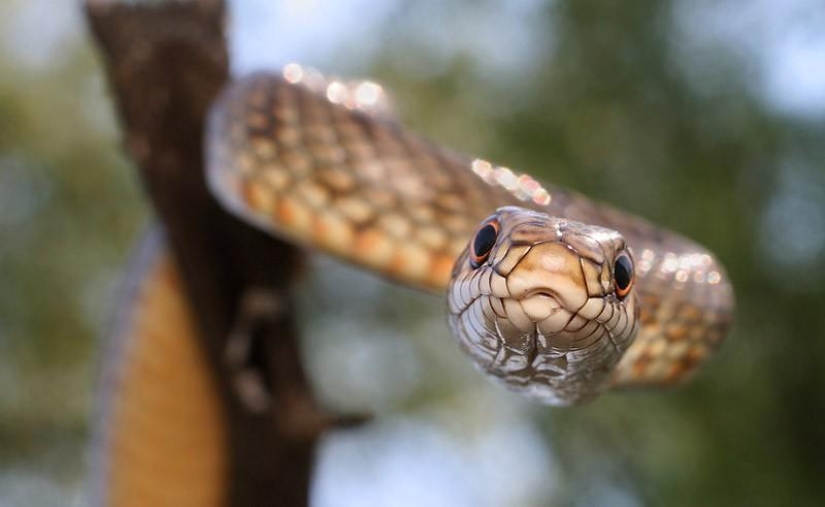
Source: Journal/shinkarenkostas
I'll start with lizards. I photographed almost all of them.
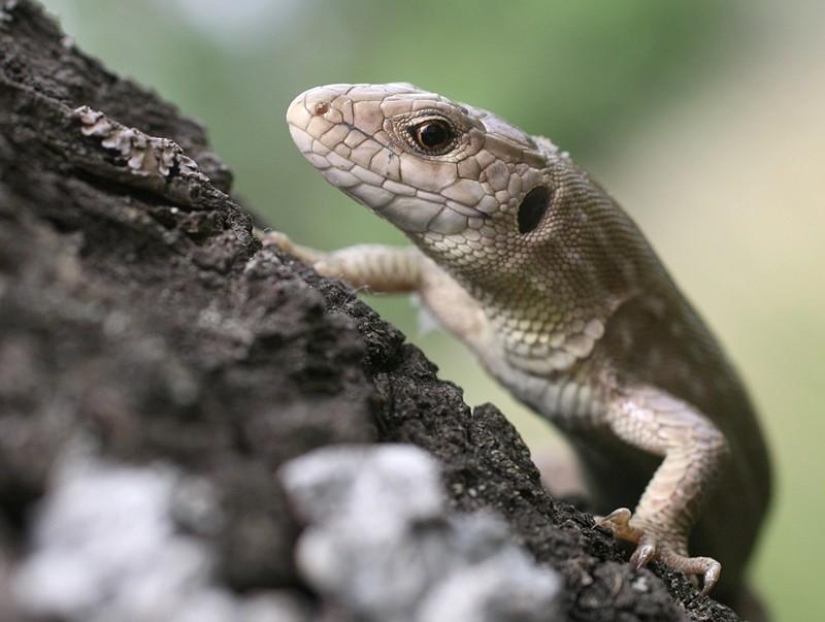
1. The most common species is the agile lizard (Lacerta agilis). It is found in all wastelands, even in cities. Avoids only very dry biotopes.
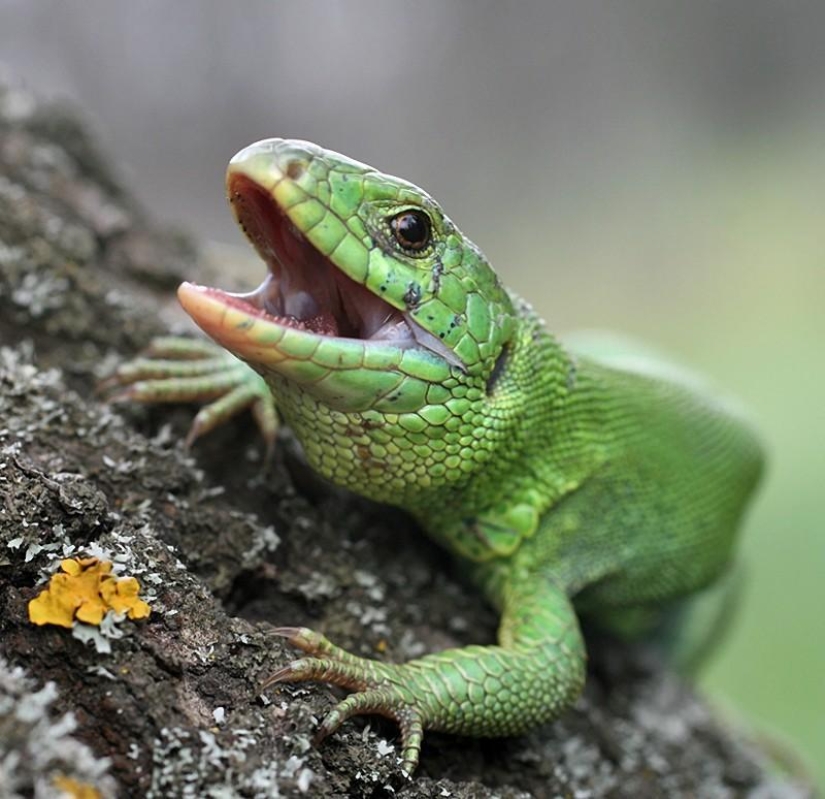
2. Males of quick lizards in the mating season have a bright green color.
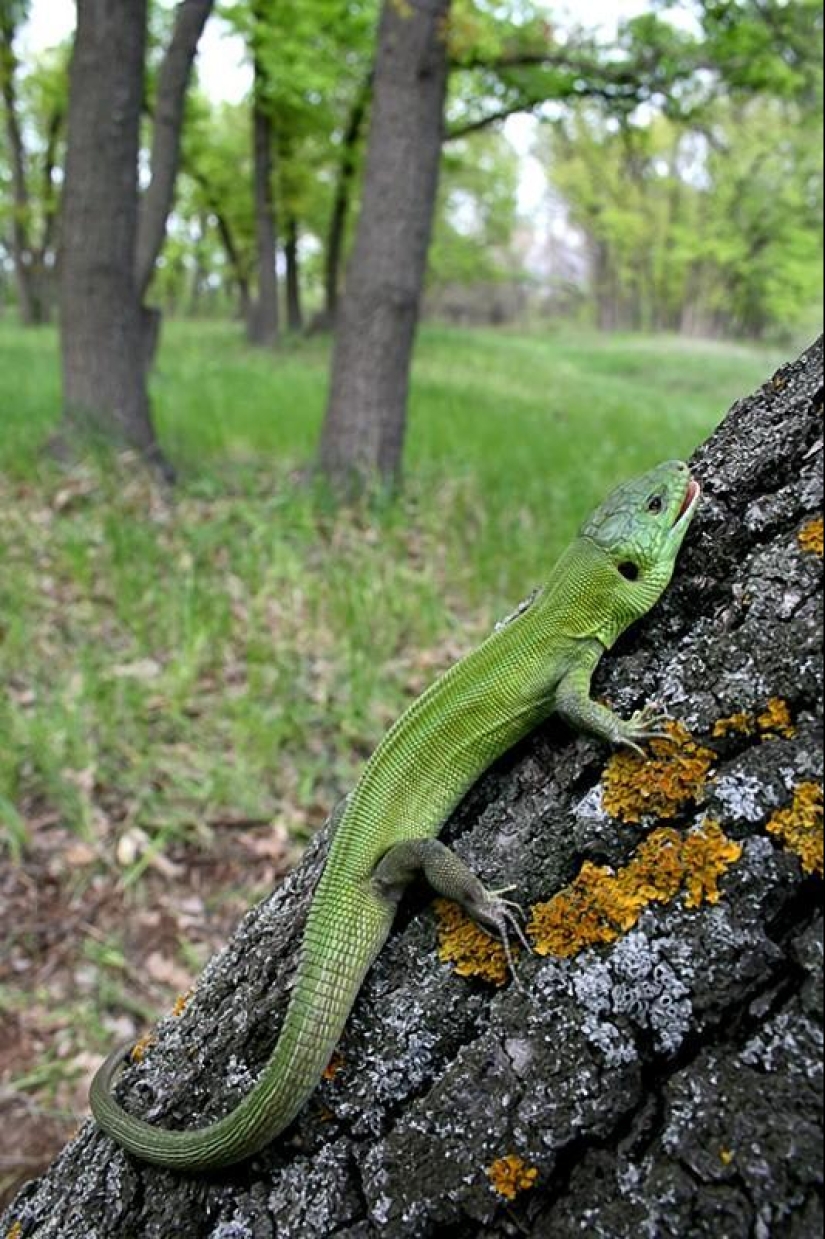
3. In our region, agile lizards are most often found in river valleys.
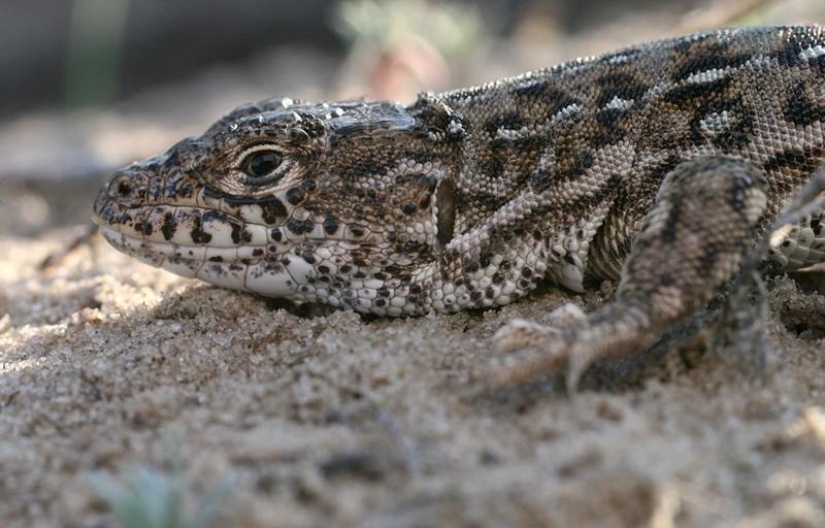
4. The next lizard is also quite widespread - it is a multi-colored foot and mouth disease (Eremias arguta). Inhabits areas with sandy soils. Another inhabitant of the sands is very similar to her - a fast foot-and-mouth disease, which I have not yet met.
The following lizards are also inhabitants of the sands, both weakly fixed and loose. These are round heads. In the Lower Volga region, this group of lizards is represented by three species.
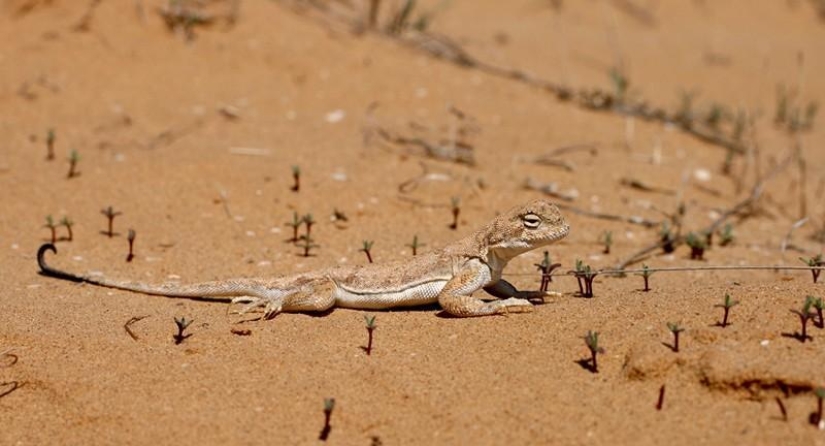
5. Roundhead - vertihvoka (Phrynocephalus guttatus). The most common among our round heads. It got its name for the behavior of males denoting their territory - the lizard raises its tail vertically and turns it into a spiral. I happened to observe the roundhead only once, so I didn’t film anything worthwhile ...
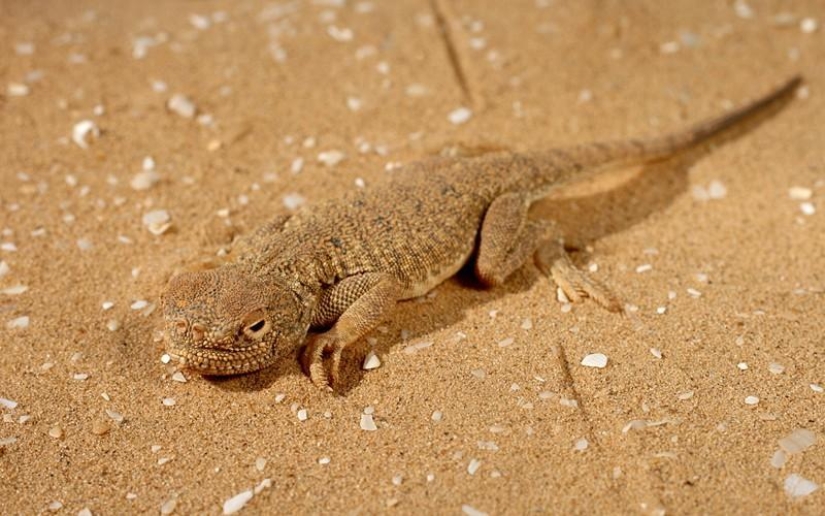
6. The next species is the round-eared (Phrynocephalus mystaceus). Also an inhabitant of hilly sands. The males of this species have spectacular bright "ears" - skin folds that the lizard opens to scare an opponent or enemy. I was able to find only the female of this species.
Takyr roundhead (Phrynocephalus versicolor), as the name implies, inhabits takyrs, also likes to live among semi-shrubs on clay soils. I have not yet seen a takyr round head.
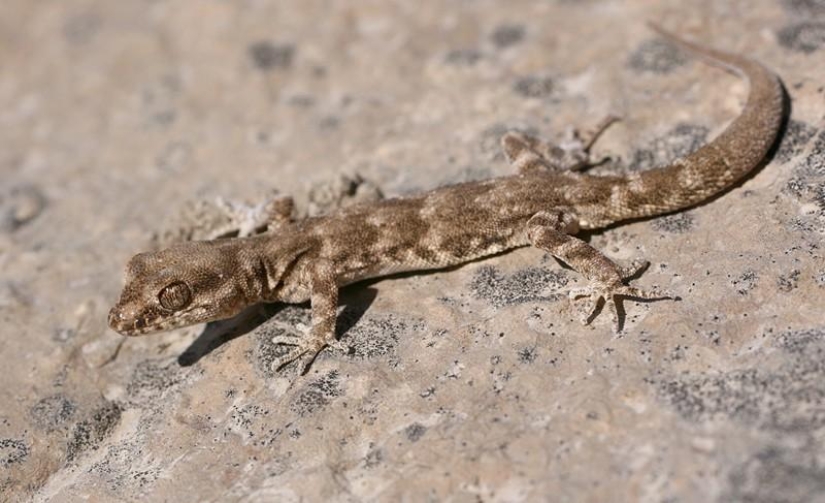
7. The last lizard on my list is the squeaky gecko (Alsophylax pipiens). In danger, these reptiles really squeak softly. On the territory of Europe, the only habitat of this species is known - Mount Big Bogdo in the vicinity of Lake Baskunchak in the Astrakhan region. This territory has the status of a specially protected area, the Bogdinsko-Baskunchaksky Reserve is located here.
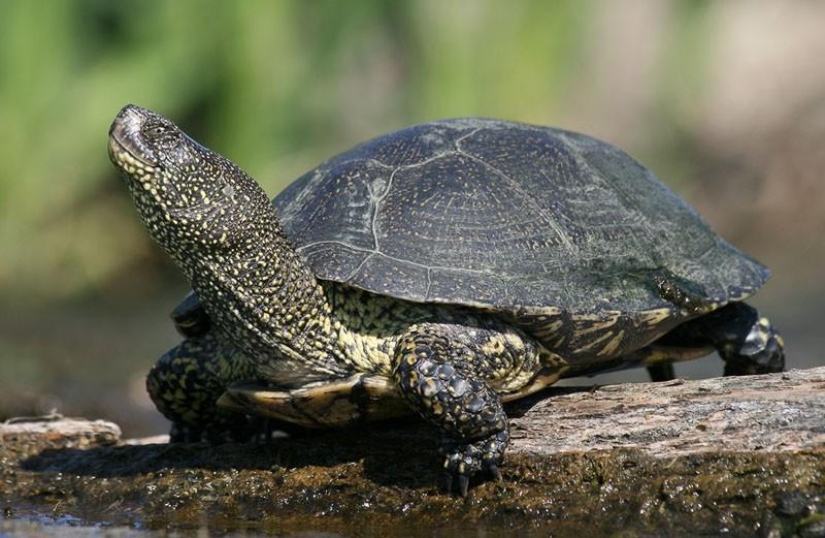
8. The next reptile is the marsh turtle (Emis orbicularis). Inhabits all more or less large reservoirs of the region.
Now I'll move on to snakes. The list of species consists of 11 items, I photographed only 6 of them.
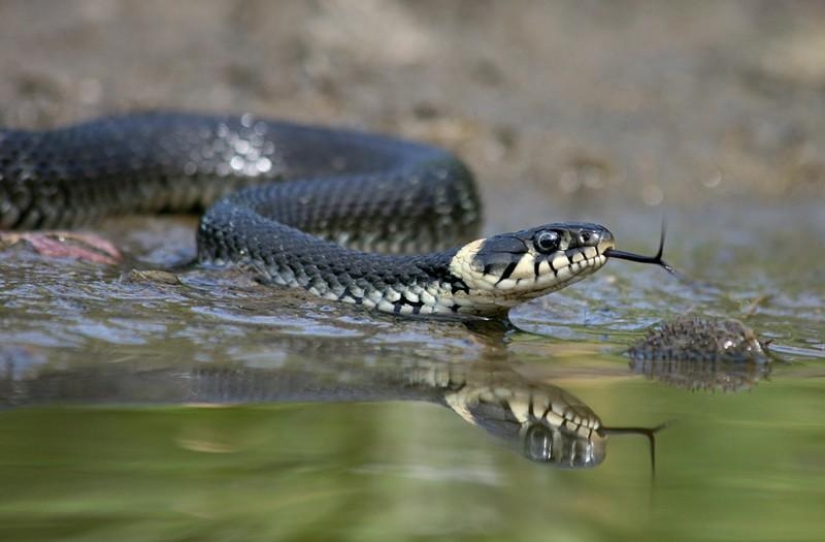
9. The first on the list is the common snake (Natrix natrix), probably everyone is familiar with this non-venomous snake with characteristic orange or yellow "ears".
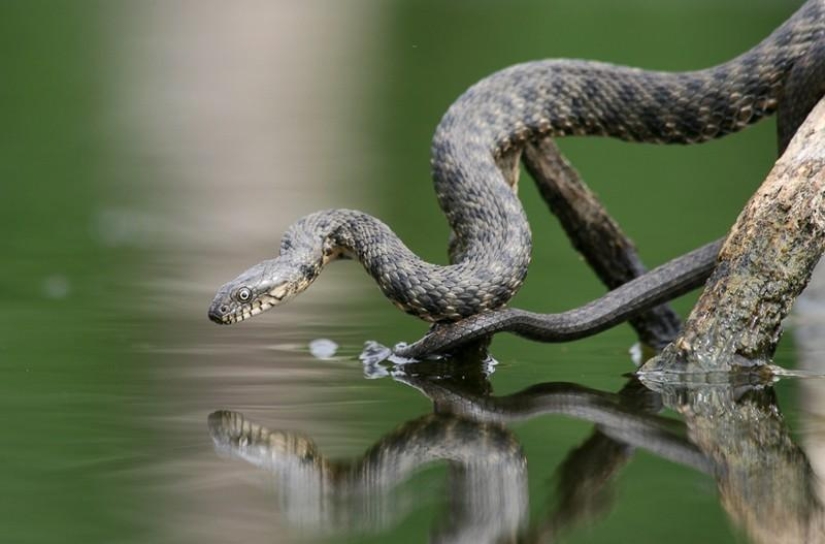
10. Further tireless fishermen - water snakes (Natrix tessellata). These harmless snakes are deprived of such good identification marks as the "ears" of an ordinary snake, so they get it from people. Water snakes are called as soon as they are: both "chess viper" and "deadly poisonous hybrid of viper and snake."
The next snakes are snakes. They are just as non-venomous as snakes. But they are extremely aggressive.
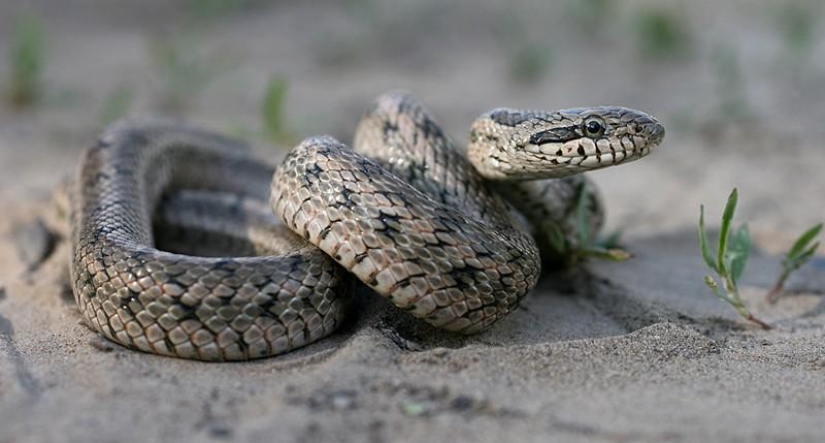
11. Patterned snake (Elaphe dione) has the widest distribution in the region. Lives both in the steppe and in floodplains. Very good tree climber.
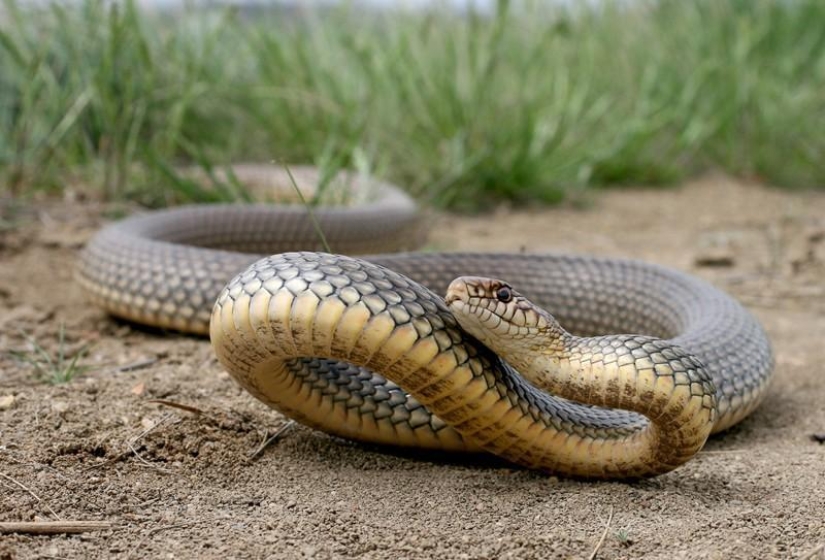
12. Yellow-bellied snake (Hierophis caspius) is the largest and most aggressive snake in Europe. Some specimens reach 2.5 meters in length! This snake is not shy. Very often, instead of fleeing, the snake attacks, this behavior has a psychological effect. When such a giant lunges towards a person, hissing menacingly, he becomes somehow uncomfortable, even if you know that the snake is not dangerous. The main range of the species is located to the south of Volgograd; to the north, it is noted only on Elton and in the Shcherbakovskii Nature Park. Preferred habitats are ravines and beams. This species also climbs trees, where it hunts or hides from danger.
Two other species of snakes - four-striped (Elaphe quatuorlineata) and pallas (Elaphe sauromates) I have not yet met. For them you need to go to the Astrakhan region.
Now let's move on to poisonous snakes - vipers. There are two types of them in the Lower Volga region.
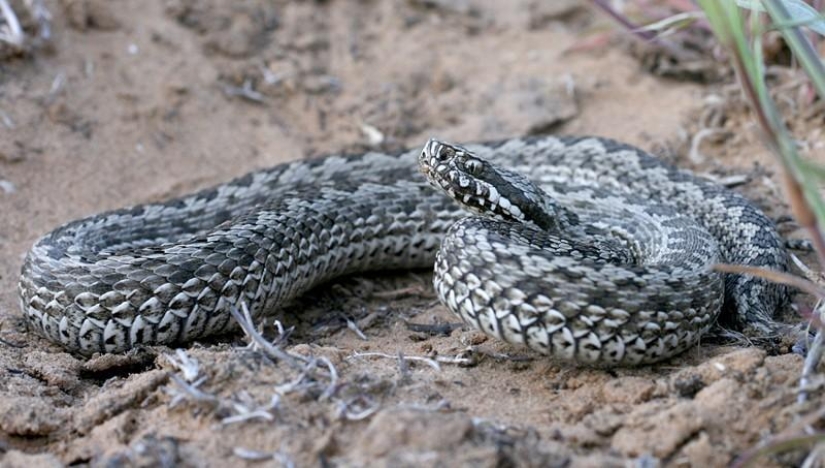
13. Steppe viper (Vipera renardi or V. ursinii). Inhabits xerophytic biotopes with clay or sandy soils. Especially a lot of them in the sands of the Astrakhan region.
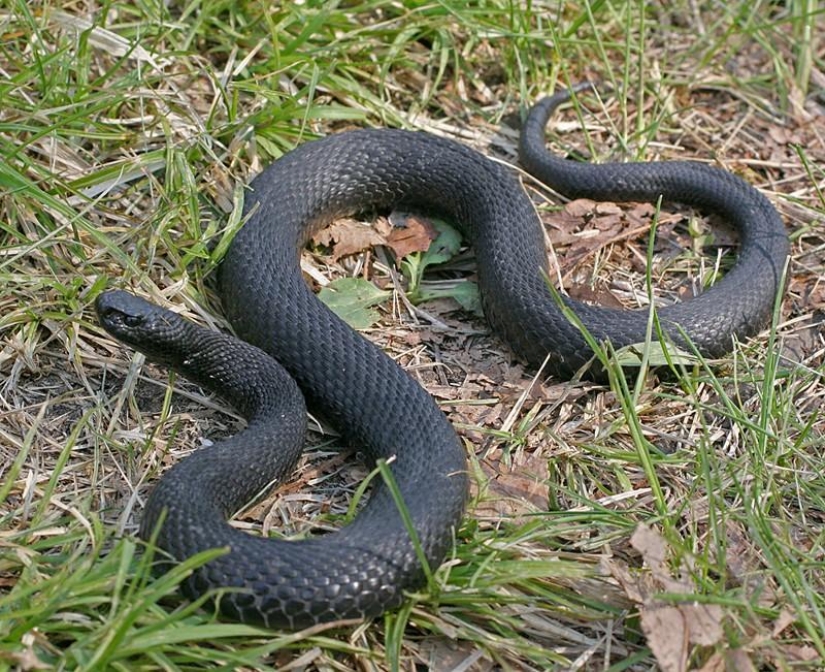
14. The second viper - Nikolsky's viper (Vipera nikolskii), a little-studied species, is listed in the Red Book of the Russian Federation. In the Lower Volga region, it inhabits the floodplains of the rivers of the Don basin.
This is where the list of reptiles I found ends. In addition to the presented species, snakes authentically live in the region: copperhead (Coronella austriaca) in floodplain and gully forests, lizard snake (Malpolon monspessulanus) in Kalmykia and on the right bank of the Volga in the Astrakhan region, sandy boa (Eryx miliaris) in loose hilly sands of the Astrakhan region and Kalmykia.
Recent articles

If it seems to you that the New Year holidays are being celebrated somehow incorrectly, then you definitely haven't seen these ...

While the sun practically disappeared from the sky above the Arctic Circle and the night seemed endless, the Vikings prepared to ...
Related articles

We all know that allergies can be cats, dogs, chocolate, citrus fruits and pollen. But things that can cause a dangerous reaction, ...

We share a planet with many venomous snakes. They are everywhere, except for the coldest continent – Antarctica. It is quite ...

Lizards, snakes, or insects are less appreciated by people compared to our usual choice of pets. Maybe it's because they sometimes ...

Sometimes reality presents us with amazing coincidences. Objects blend perfectly into the background, animals become invisible in ...